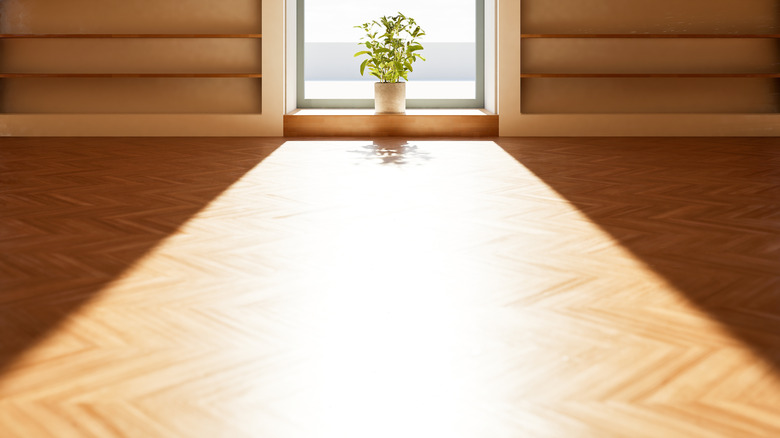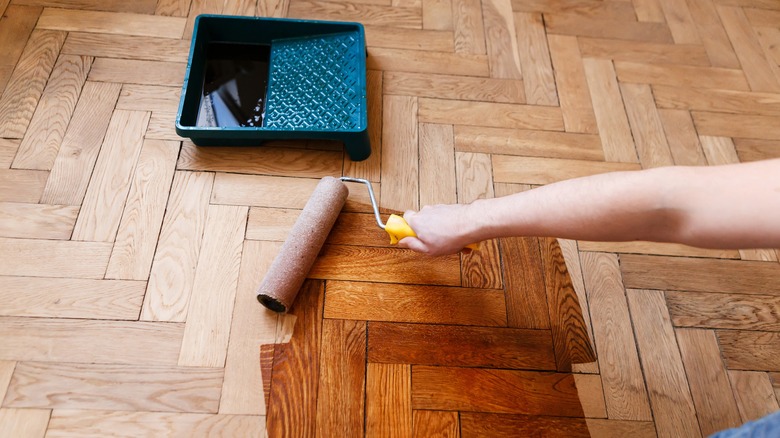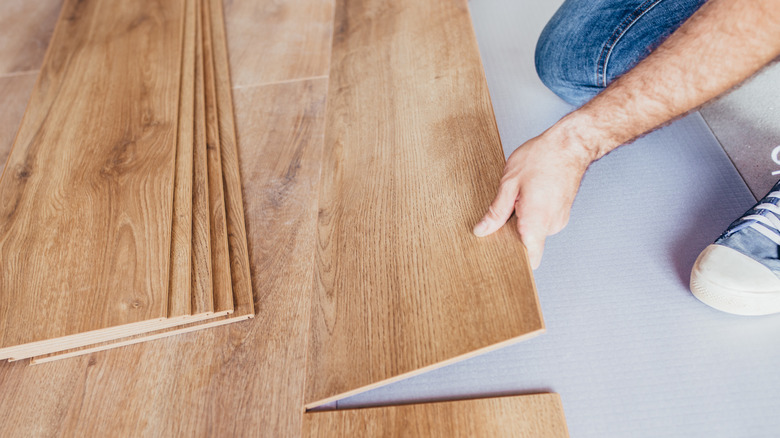Why Hardwood Flooring May Not Be The Best Option If Your Home Is Filled With Natural Light
Out of a dozen types of floors you could install in a new home, one of the most welcoming and natural-looking is hardwood flooring. Because of its especially high expense, it has become aspirational for newer homes and a coveted feature in older houses. But even if it's within your financial reach, there could be another reason to pause before choosing to fill your house with wooden floors. Take a good look at all your rooms. Depending on what direction your home faces and how many windows you have, if you've got a home flooded with gorgeous, serotonin-boosting natural light, your hardwood floors will likely fade over time.
Sunlight makes all things grow, including trees, which retain their photosensitivity even after they've started a new life as floor planks. Photosensitivity means they react to the sun's UV rays much the way we do, and floors can lighten or darken over time. Sunlight can also interact with the wood's finish, but the most significant factor of all is prolonged, intense daily sun exposure. Whichever rooms have hours of direct sunlight will be the ones whose floors will be the most prone to a noticeable shift in color. If you keep an area rug in the same spot for years in a sunlight-filled room and one day decide to move it, that's when the bleaching effect of the sun will become apparent. Though we love it, it is possible to have too much natural light in your home.
What to do about fading hardwood floors
If you're in a planning phase and considering what floors to commit to, know that if you decide to get real wooden flooring, you can also plan now for preventive measures to minimize sun damage. Though, actually, most of the actions are the same whether you're in prevention mode or repair mode. Every three to four years, consider recoating your floor. Have the pros come in and give your floor another layer of finish to revivify the protective coating against the sun. If you're in repair mode, then refinishing is a more involved and expensive but effective option. It involves sanding to pull off the old finish, staining it the same or a different color, and then completely refinishing the floor.
In addition to floor-focused techniques, consider stopping the problem at the source. If you have floods of natural light coming in, you might need window film on your windows ASAP. They'll minimally darken the view out of your window, yet window film will reduce the intensity of the sun's UV rays by 99%. Or keeping your curtains and blinds closed all day will pretty much eliminate floor bleaching, but that's no fun. If your inner designer will allow it, periodically move the rugs and furniture around so the whole floor gets evenly exposed. This is a bit like turning over on the beach to get an even tan.
Alternative flooring ideas
There's a world of flooring available at wildly different price points. They each bring a different vibe into a room, and of course, it's not just the potential for fading but how you'll be designing your space that will help determine what you choose. If you love the look of hardwood but are, for any reason, searching for a durable alternative, then laminate flooring could be a fantastic option. Laminate is highly resistant to discoloration from the sun, even loads of constant sun, and you can purchase it in a style that mimics the look of wood. It's made from pressed wood board with an image of wood grain imprinted into the top layer. Most importantly, it's coated in a scratch-proof, fade-resistant resin. As an estimate only, laminate flooring might cost $1 to $7 per square foot, while hardwood costs $3 to $15 per square foot. Another great flooring option that won't fade is stone and porcelain tiles, which are coated in a UV-resistant glaze.
The following flooring options will fade over time in reaction to direct, prolonged sun exposure, but you could consider them if you invest in professional window film installation. For a wood-like feel, plywood planks, engineered wood, and real bamboo are good choices. Then there's luxury vinyl plank flooring and carpet squares (not to mention wall-to-wall carpeting). Take the amount of sunlight and your design aesthetic into account as you're making your choices.


